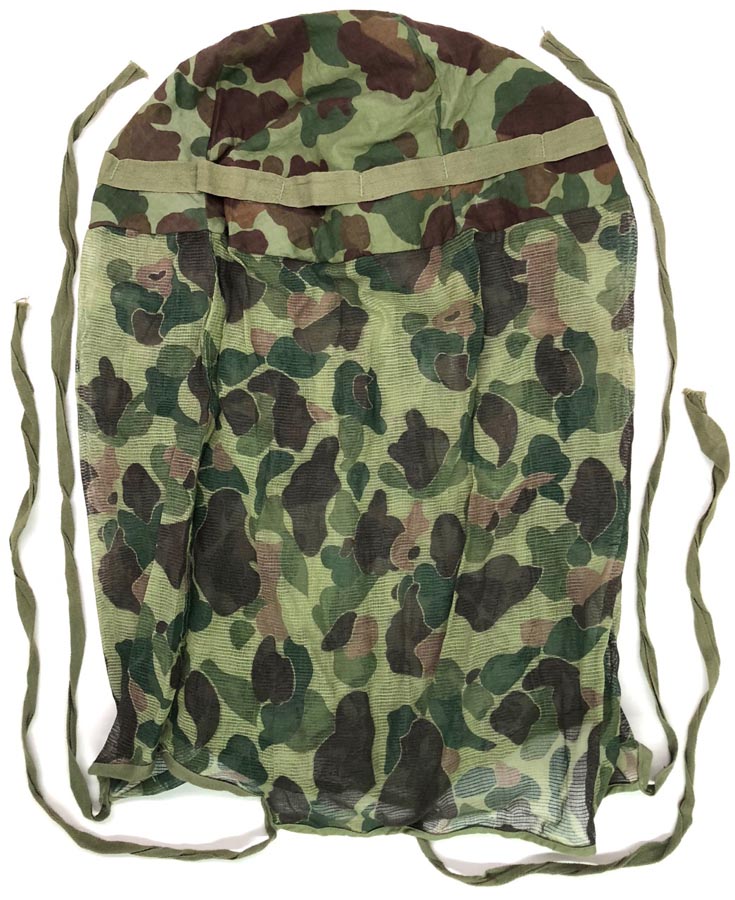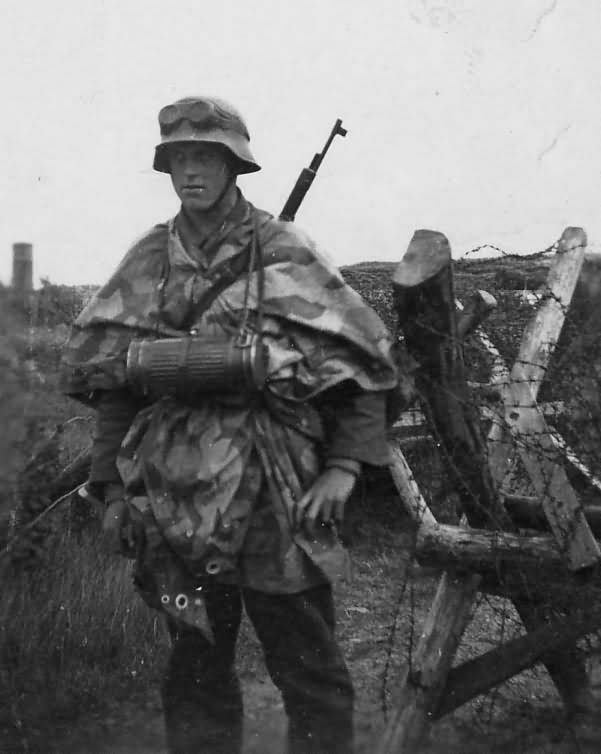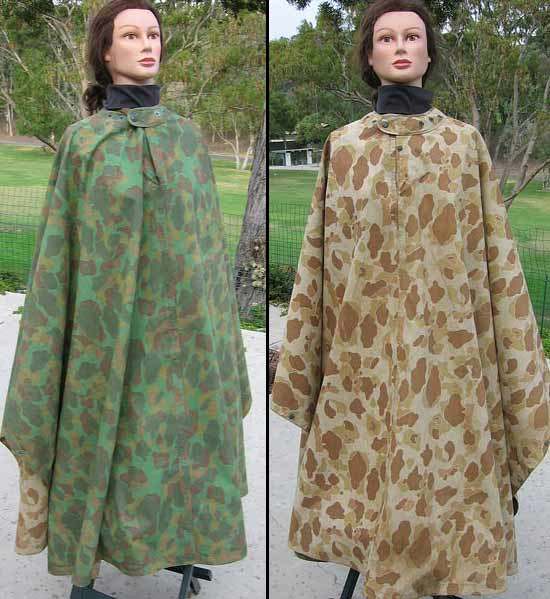Cancellation & Reclassification
As the second‐generation uniforms were being introduced, a more fundamental question arose regarding the effectiveness of the camouflage pattern itself. Field reports indicated that when the camouflage uniform was worn against a dark jungle background men became more visible ‐ an effect that became even more pronounced when men were in motion. This was primarily due to the very light background used for the fabric over which the dappled pattern was printed. Though camouflage uniforms were found to be acceptable for men in static positions, by this time most combat units were involved in offensive operations requiring continual movement through the jungle. Furthermore, testing had revealed that a single shade of dark gray‐green offered the most effective concealment for a combat uniform that was to be worn against a variety of backgrounds. As a result, the General Staff, Army Ground Forces, declared the camouflage pattern material unsuitable for jungle operations. It was determined that the standard issue HBT uniform, converted to the dark green olive‐drab Shade 7 in March 1943, would be preferable for use in jungle environments. Thus, in January 1944 the Army General Staff directed that the camouflage uniform be declared limited standard as soon as all of the camouflage material on hand was expended. During March 1944, the last of the contracts for the Army two‐piece suits had been fulfilled and on 30 March 1944, the General Staff approved a Quartermaster Corps Technical Committee recommendation that shipments of camouflage uniforms into theaters of operations be halted. It is interesting to note that on page 16 of the February 1944 Army Manual,
Camouflage of Individuals and Infantry Weapons, a warning is issued against wearing the jungle suit in extremely dark sections of the jungle.


The same fault that the Army pointed out in the camouflage pattern caused the Marine Corps to take concurrent action in restricting the use of their camouflage uniforms. It is worth pointing out that in the Army Quartermaster Historical Study No. 16,
Clothing the Soldier of World War II, in the section discussing jungle clothing, it states that USMC officers agreed with the Army's conclusion that the camouflage fabric, based on visibility issues, was unsuitable for jungle operations.3 The book
Grunt Gear refers to the existence of an ambitious Marine Corps objective that was in place in late 1943 that sought to procure enough camouflage uniforms so that one suit would be available for each man assigned to a combat unit within the First Marine Amphibious Corps. Though it is noted that this procurement objective was only intended to be temporary, it does demonstrate the strength of the commitment the Marine Corps had to their camouflage uniform program at that time. However, without coincidence or surprise, the Marine Corps ended this procurement program concurrent with the Army ending overseas use of the camouflage uniform. This was accomplished by an April 1944 memo issued by the Commanding General of the Fifth Amphibious Corps in which new directives greatly reduced the number of camouflage suits that would be made available to Marine units going forward. It also identified the standard Marine HBT utility uniform as the primary uniform that would be issued for use in the Pacific Theater of Operations.4 In retrospect, the decision by the military to effectively end the camouflage uniform program in early 1944 seems rather sudden and curious considering it came so shortly after considerable effort was expended producing the much improved second‐generation uniforms.







